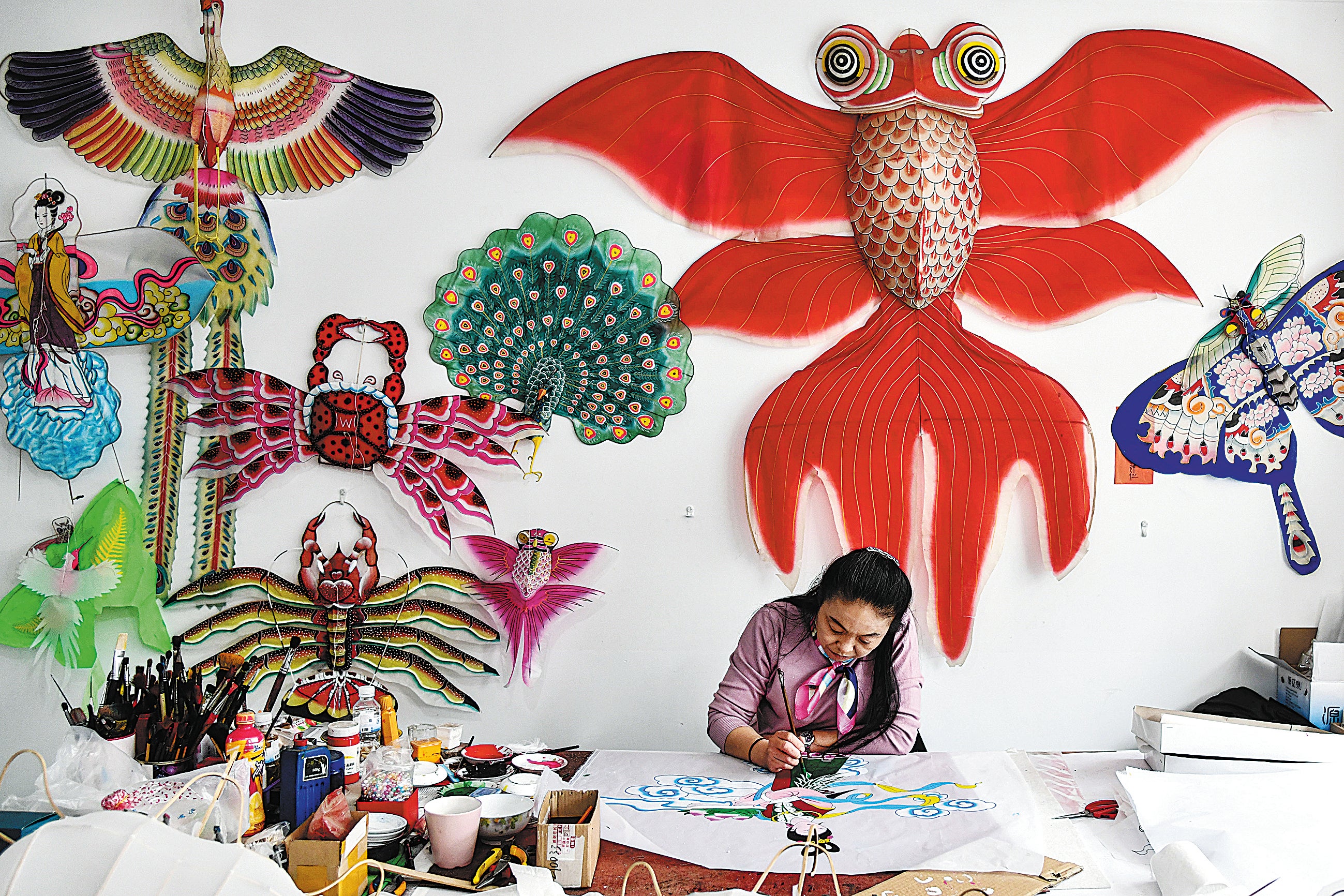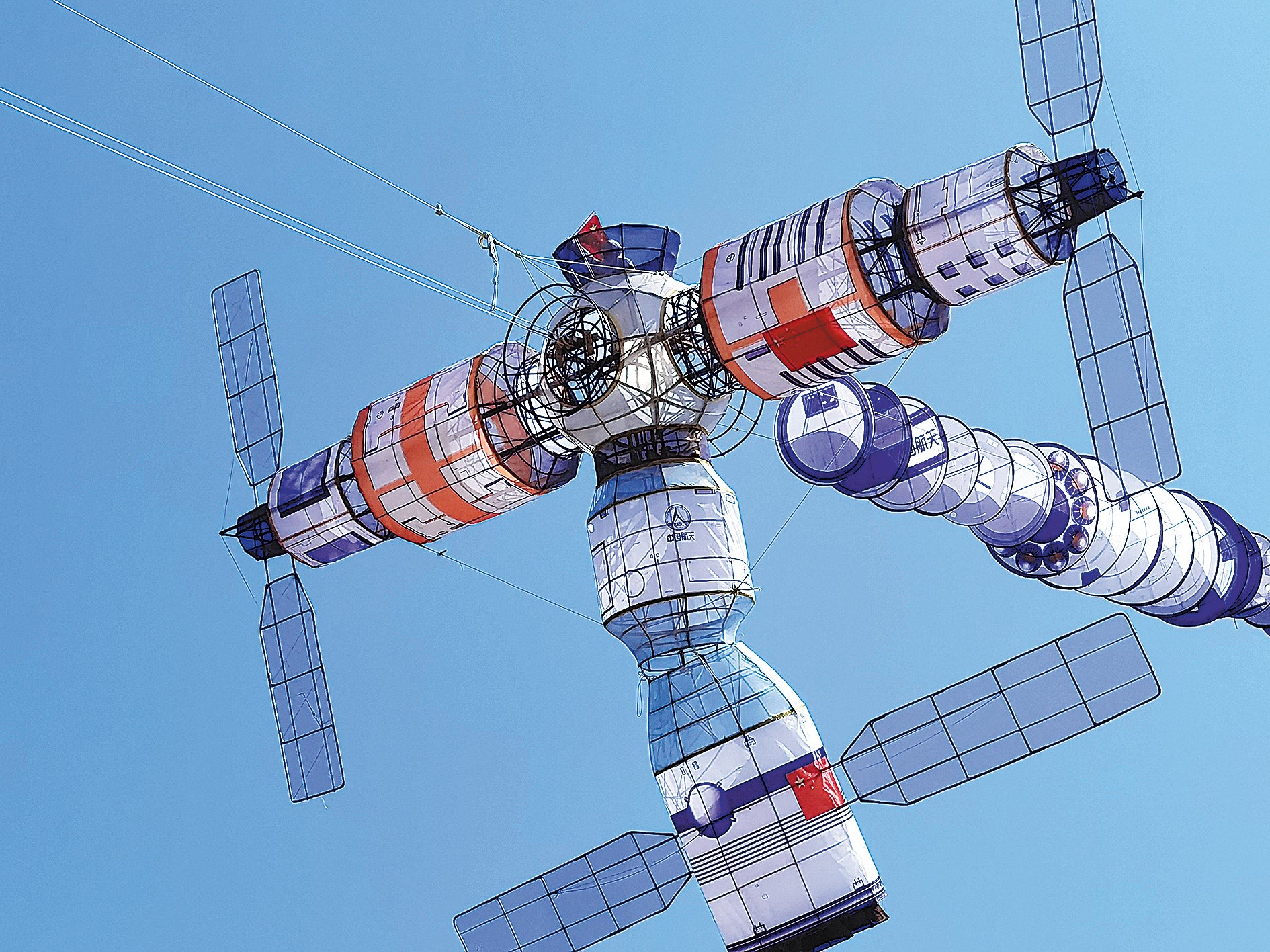World kite capital soars with its rich heritage
THE ARTICLES ON THESE PAGES ARE PRODUCED BY CHINA DAILY, WHICH TAKES SOLE RESPONSIBILITY FOR THE CONTENTS

In April, crowds in Weifang, Shandong province, looked to the skies in awe. High above them, replica spacecraft re-enacted the breakthrough docking procedure that had set a milestone in China’s space programme.
The spectacle was complete with a station module and an astronaut spacewalk, all made up of a huge, complex structure of kites soaring on the wind.
The China Space Station kite, put together by more than 20 craftsmen over two months and combining traditional techniques with state-of-the-art digital modelling technology, attracted a huge deal of attention in the internet.
“From superheroes to dinosaurs, in Weifang, anything can fly in the sky,” one online user exclaimed.
Weifang is widely known as the world’s kite capital. The city acknowledges this with kite-themed landmarks including a railway station depicting a fluttering butterfly, public sculptures portraying the popular pastime, and streetlights along the main thoroughfare leading to the sprawling venue for an annual international kite festival.
At Weifang Kaixuan Kite Manufacturing Co, workers make kites ranging from gleaming aircraft and beautiful landscape paintings to lifelike marine creatures such as whales and octopuses.
“More than 95 per cent of these kites are exported and have been sold in more than 40 countries and regions, including Denmark, France and New Zealand,” said the company chairman, Wang Xiaoping.
“When we exhibit our kites abroad we say we are from Weifang. Foreigners know it as the kite capital of the world, and our products are very popular with them.”

According to local historical records, Weifang kites were popular during the Ming Dynasty (1368-1644) and were a major folk art in the Qing Dynasty (1644-1911), with many artists becoming widely known for their exquisite, high-flying creations.
Weifang kites took off after the China’s reform and opening-up began in the late 1970s. In 1984 its kites were sent to Shanghai to take part in an exhibition, impressing officials of an international kite association who immediately suggested that the city set up a global platform for the art. This led to the first Weifang International Kite Festival that same year.
The city’s kite industry has continued to grow, with the festival being held every year since 1984. There are now more than 400 kite companies in the city, and they employ more than 80,000 people. Each year more than 220 million kites are made, with the value of sales totalling more than 2 billion yuan (£240 million) a year, municipal authorities said.
“Weifang kites account for more than 75 per cent of the international kite market and nearly 85 per cent of the domestic market,” said Zhang Jianwei, director of the comprehensive service centre at the Weifang International Kite Association.
At least 29 kite export companies are registered in the city, with markets on five continents.
Wang, chairman of Weifang Kaixuan Kite Manufacturing, said the company exports millions of kites of all makes and sizes each year. A premium kite can cost more than 7,000 yuan (£840) while simple ones with small, triangular frames cost only 10 yuan.
Many kites outside China are used not just as toys but also for advertising purposes, so there is great demand, Wang said. “Weifang’s kites not only bring economic benefits to the local people, they also carry traditional Chinese culture to the world.”
A traditional Weifang kite is made of bamboo and features Chinese painting. Traditional kite-making focuses on the four arts of tying (using bamboo for a frame), pasting (placing paper, silk and other material onto the frame), painting and “letting go” (flying). In 2006 Weifang kites were added to China’s intangible cultural heritage list.
Previously published on Chinadaily.com.cn
